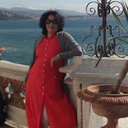Nutritional and medical status of lactating women and their infants in the Kathmandu valley of Nepal.
Mots clés
Abstrait
In six villages in the Kathmandu valley of Nepal, an intensive health and nutrition study was conducted on 26 lactating women and their 2--6-month-old infants. Analysis of 24-h duplicate diet composites indicated that the mothers were consuming approximately 2100 kcal energy/d. The diets contained approximately 62 g protein (11.6% of the calories), 392 g carbohydrate (73.3% of the calories), and 20.9 g fat (8.6% of the calories) and a mean of 24 g neutral detergent fiber. Although anthropometric measurements indicated that the mothers had mild protein malnutrition and inadequate energy reserves, their infants exhibited low-normal weight and length for age. All the mothers had hepatitis A antibodies; 92% had tropical eosinophilia, indicating intestinal parasites; 16% had cheilosis and angular stomatitis, indicating a possible B-vitamin deficiency; and 8% had elevated urinary nitrite, indicating urinary tract infection. There were no unusual physical findings on the infants. Although the children appeared healthy, the mothers showed evidence of multiple infections and possible nutrient deficiencies.


